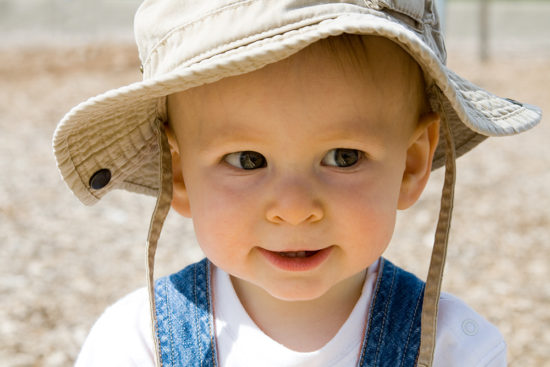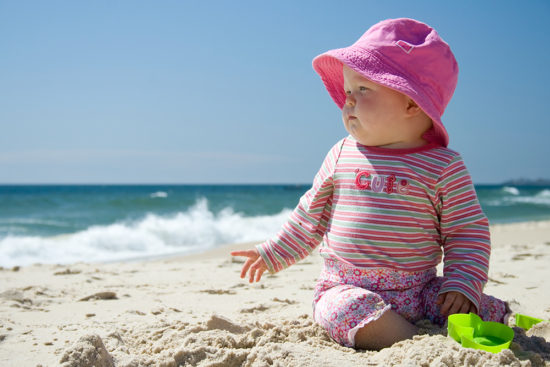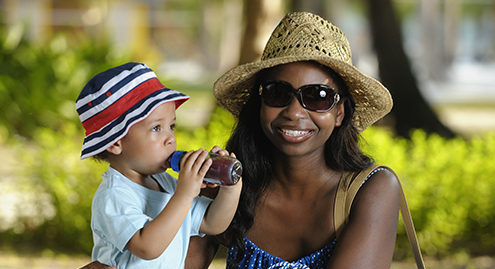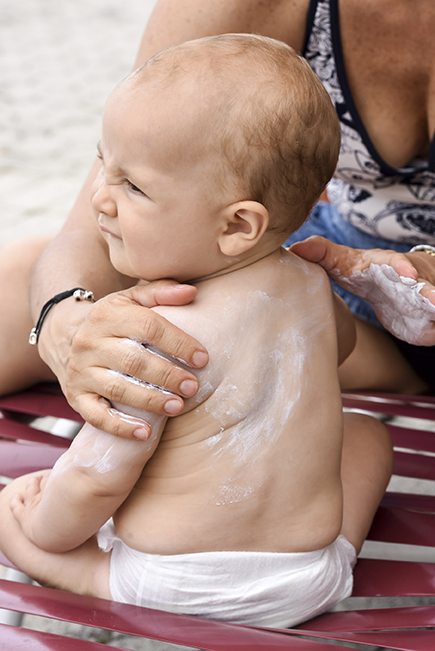We look at how to keep your child safe, comfortable and protected over the summer

When the sun’s out, many parents head out with their little one to get some fresh air and enjoy time outdoors.
It’s important that you know how to keep your baby sun safe though, as a baby’s skin can burn and damage easily. This is because they don’t yet have much natural protection from the sun.
Try and keep your little one in the shade, especially if your baby is younger than six months.
Buggies shouldn’t be covered with anything that prevents air from circulating, as this can lead to overheating.
It’s best to keep them out of direct sunlight, especially between 11am and 3pm, when the sun is strongest.
If you’re out, try and find a shady spot in the park or garden under a tree, for example.
If you’re on the move, the Lullaby Trust advises that babies’ prams and buggies should not be covered with blankets, cloths or any cover that prevents air from circulating, as this can lead to overheating.
Using a cover can also mean that you might not be able to see if your baby is OK or check their temperature easily. The Lullaby Trust recommends attaching a clip-on sunshade or parasol to a pram or buggy.
It’s best to cover your baby’s body, arms and legs with loose clothing. Lightweight, natural material, such as cotton, offers the best protection.
Shoulders are particularly vulnerable and burn quickly so tops that cover your baby’s shoulders are ideal, particularly on very sunny days.

At the beach, sun protection tops and suits made of Lycra, or a mix of Lycra and nylon, are perfect for splashing in the sea as they dry quickly and block more of the sun than normal t-shirts.
They’re also relatively inexpensive; you can usually find them at an NCT Nearly New Sale!
It may feel like mission impossible but try and get your little one to keep a wide-brimmed hat on.

A hat with a flap to cover the neck is useful for toddlers.
If your little one constantly pulls their hat off, try one with an elasticated or Velcro strap that tucks under their chin to keep it in place.
You can also encourage them by wearing a hat yourself and getting a little hat for their favourite teddy or toy.
Pointing out ‘how nicely teddy is wearing his hat’ might encourage them to keep theirs on.
Sunscreens appear to be safe for babies and should be used rather than risking sunburn. It’s best to use a sunscreen cream, preferably with a sun protection factor (SPF) of at least 15, made for babies or toddlers that blocks both UVA and UVB.

Choose one that’s easiest for you to get on your child. A spray might be easier if you have a toddler trying to squirm away from you.
Apply sun cream liberally to skin that isn’t covered by clothes or a hat. According to NHS Choices, most people don’t apply enough sunscreen and if sun cream is applied too thinly, it provides less protection.
It’s also important to allow enough time (around 30 minutes) for sun cream to sink into the skin before you head out.
You will need to re-apply sunscreen regularly, particularly if your child is in and out of the sea, outdoor swimming or paddling pool.
Sun cream doesn’t offer 100% protection so covering your baby’s skin with appropriate clothing and keeping them out of direct sunlight is still important – regardless of how much cream they have on.
Like adults, babies and young children need to drink plenty of fluids to avoid becoming dehydrated. This is especially true when the sun’s out.
Read our article to find out more about the signs and treatment for dehydration.
The British Red Cross have useful information about coping in the heat.
Read more about heat exhaustion and heat stroke from NHS Choices.